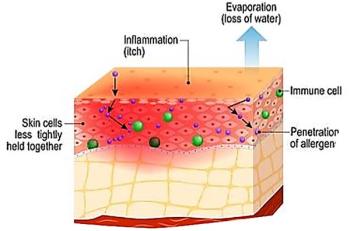
Hunts Narrows for 'Popcorn Lung' Culprit
UTRECHT, The Netherlands -- Four cases of bronchiolitis obliterans among chemical plant workers shed new light on possible causes of "popcorn lung," researchers here said.
UTRECHT, The Netherlands, Aug. 31 -- Four cases of bronchiolitis obliterans among chemical plant workers shed new light on possible causes of "popcorn lung," researchers here said.
The study adds weight to circumstantial evidence diacetyl, a chemical used to add a buttery flavor and aroma to foods such as microwave popcorn, is the cause of the disease, said Frits van Rooy, M.D., of the Institute for Risk Assessment Sciences at Utrecht University, and colleagues.
In the first September issue of the American Journal of Respiratory and Critical Care Medicine, the researchers concluded that "exposure to an agent during diacetyl production appears to be responsible for causing bronchiolitis obliterans syndrome."
They said that other compounds used in the production of diacetyl -- acetoin and acetaldehyde -- can't be completely ruled out, but that a causal role for diacetyl is consistent with its suspected role in disease among food workers.
"Popcorn lung" entered the medical lexicon after a cluster of cases of bronchiolitis obliterans among former workers in a microwave popcorn plant was reported five years ago.
Earlier this year, several cases were reported among workers in plants that make flavorings and where diacetyl is used. (See
But the current report is the first time the condition has been reported among workers involved in production of the chemical itself, Dr. van Rooy and colleagues said.
The researchers interviewed and performed spirometry on 175 of 196 workers from a Dutch chemical plant that made diacetyl between 1960 and 2003.
Workers with fixed airway obstruction had more lung function tests, including diffusing capacity and lung volumes, as well as high-resolution computed tomography studies as they breathed in and out.
Three workers were found to have bronchiolitis obliterans. Two had never smoked and one was a moderate smoker, the researchers said.
Case one was a non-smoking man whose symptoms began at age 45, the year after he started at the plant. At this investigation, he had a one-second forced expiratory volume (FEV1) of 35.1% of the predicted value and a forced vital capacity (FVC) of 65.2% of predicted. The ratio of the two values was 42.9.
Case two was a non-smoking man whose symptoms began at age 52, 14 years after he started at the plant. He had an FEV1 of 42.3% of predicted, and FVC of 57.7% of predicted, and an FEV1/FVC of 43.8.
Case three was a male smoker (14 pack-years) whose symptoms began at age 39, the same year he started at the plant. He had an FEV1 of 37.4% of predicted, and FVC of 65% of predicted, and an FEV1/FVC of 57.8.
The initial diagnosis in the first two cases was chronic obstructive pulmonary disease (COPD), while the third man was diagnosed with COPD and asthma.
After the study ended, a fourth case was discovered among workers who had not initially opted to take part in the study, Dr. van Rooy and colleagues said.
As in studies in other settings, exposure to diacetyl may be a cause or a marker for a cause, the researchers said. But in this case, the "spectrum of exposures is much smaller" than in food processing plants, they said.
"Our study suggests a causal role of diacetyl," they said.
The finding has implications for physicians and public health officials, according to Kathleen Kreiss, M.D., of the National Institute for Occupational Safety and Health in Morgantown, W.Va.
"None of the four cases had been recognized as bronchiolitis obliterans or as occupationally related," Dr. Kreiss wrote in an accompanying editorial, adding that to find such cases, "physicians need to consider the diagnosis."
Dr. Kreiss was lead author of the first report on popcorn lung, published in the New England Journal of Medicine in 2002.
Dr. Kreiss argued that evidence for considering diacetyl to be hazardous is mounting, adding that Dr. van Rooy and colleagues have made "several substantial contributions to the understanding of this newly recognized occupational hazard."
The evidence now supports public health "action to minimize exposure to diacetyl," Dr. Kreiss argued.
Newsletter
Enhance your clinical practice with the Patient Care newsletter, offering the latest evidence-based guidelines, diagnostic insights, and treatment strategies for primary care physicians.






















































































































































































































































































